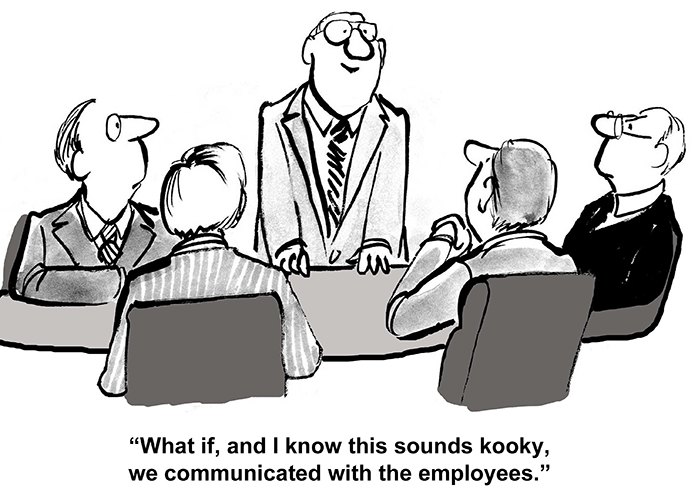
Three steps to increasing employee engagement through internal communications
September 5, 2018
By Heather Nezich, courtesy of SBAM Approved Partner ASE
Organizations with high levels of employee engagement experience higher revenue, less employee stress and absences, higher customer satisfaction, and higher quality and safety. It affects every aspect of the company. According to research from Willis Towers Watson, effective internal communications can have a significant impact on employee engagement.
Three key elements of engagement can be affected by internal communications:
-
Employee/Manager Relationship – The employee feels valued and has open communication with their manager.
-
Job Impact to Organization – The employee sees how their role affects the organization as a whole.
-
Employee Involvement – The employee knows their opinion is heard and valued.
Employee/Manager Relationship
How does HR play a role in a manager’s relationship with their employee(s)? While they can’t directly influence the relationship, they can provide communication training to mangers. Communication should be a recognized and rewarded skill and a key element in the organization’s leadership model.
Research by Google’s People Analytics team made a connection between business performance and great managers. The data found that one-on-one coaching and expressing interest in employees is key to being a successful leader – more so than superior technical knowledge.
Job Impact to Organization
Employees are significantly more motivated when they understand how their roles affect the broader purpose of the company. HR plays a key role in developing the Employee Value Proposition (EVP) and making sure that employees understand it. The EVP is the organization’s internal brand. HR should play a key role in defining what the EVP is and building a “line of sight” between the roles of employees and the purpose of the organization.
ASE Partner, McLean & Company, recommends the following steps to create an effective EVP:
-
Creating a compelling employee value proposition (EVP) and employer brand is about honesty and transparency. Every organization has positives and negatives; rather than sugar-coating, focus on presenting a realistic picture of the employee experience to attract people with the right fit.
-
Tailor your communication style to your desired audience; by using a customized marketing strategy, you create a personal connection with the brand.
The first step is to create an accurate and engaging EVP as the foundation for your employer brand. If the EVP does not resonate with employees, you risk doing damage to your reputation both inside and outside the organization.
Once the EVP is developed, it’s important for it to resonate throughout the company. Employees should continually be reminded of how they fit into the bigger picture.
Employee Involvement
A key element to employee engagement is allowing employees to have a voice. HR can play a role in this by creating channels for them to be heard. Both Gallup and Willis Towers Watson support Patrick Lencioni’s principle that if employees can “weigh in, they buy in” – even if they don’t always get what they want. The important aspect is that they were heard. When employees feel their opinion is valued, they are more engaged.
Some steps to making sure employees’ voices are heard can include:
-
Create channels to allow employee involvement – Not only does a culture need to support employee feedback, but channels need to be built that allow employees to provide honest feedback. Ideas include leader lunches, employee roundtables, skip-level meetings, employee surveys, etc.
-
Make communication flow in both directions – One example of this is an internal, online community. Avery Dennison, a U.S. labeling and packaging company with 30,000 employees, created one called The Beat. Employees provide feedback to leaders and the leaders provide a feedback blog post within two weeks to let employees know how the feedback will be utilized. When surveyed, 100% of the The Beat’s members reported that their “voice is being heard” – which is a key engagement driver.
-
While communication is only one aspect of influencing employee engagement, it’s an important one not to miss.